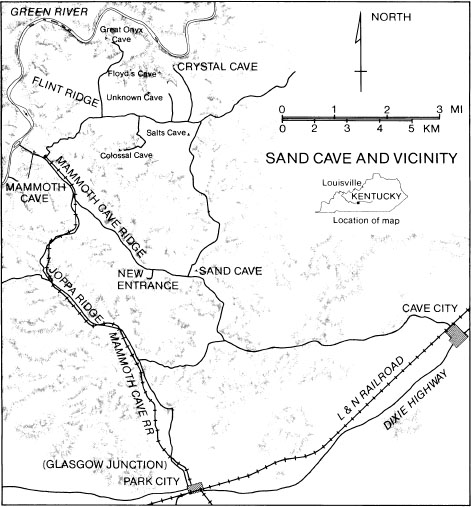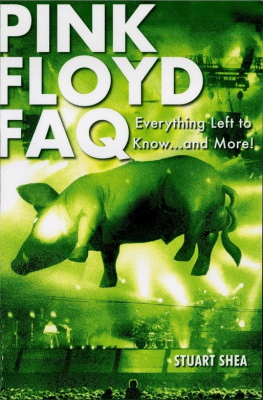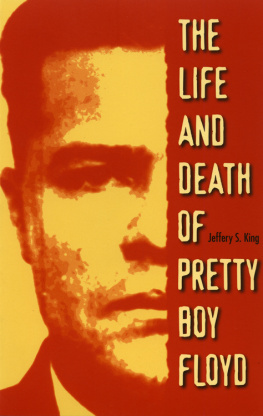TRAPPED!
TRAPPED!
The Story of
FLOYD COLLINS
Robert K. Murray and
Roger W. Brucker
THE UNIVERSITY PRESS OF KENTUCKY
Copyright 1979 by Robert K. Murray and Roger W. Brucker
Published 1982 by The University Press of Kentucky
Scholarly publisher for the Commonwealth,
serving Bellarmine University, Berea College, Centre College of Kentucky, Eastern Kentucky University, The Filson Historical Society, Georgetown College, Kentucky Historical Society, Kentucky State University, Morehead State University, Murray State University, Northern Kentucky University, Transylvania University, University of Kentucky, University of Louisville, and Western Kentucky University.
All rights reserved.
Editorial and Sales Offices: The University Press of Kentucky 663 South Limestone Street, Lexington, Kentucky 40508-4008
www.kentuckypress.com
12 11 10 09 08 8 7 6 5 4
ISBN-10: 0-8131-0153-0
ISBN-13: 978-0-8131-0153-8
Originally published by G.P. Putnams Sons.
This book is printed on acid-free recycled paper meeting the requirements of the American National Standard for Permanence in Paper for Printed Library Materials.

Manufactured in the United States of America.

| Member of the Association of
American University Presses |
TO
M ATTIE and B ILL
whose support and love saved five
other persons from being trapped
J OAN
who provided love and plenty of
opportunities to fail cheaply
Contents
Maps and Diagrams
Acknowledgments
If we were to acknowledge fully the debt we owe to others in the researching and writing of this book, few pages would be left for the narrative. Such persons are legion, ranging all the way from young people half our ages to oldsters living on borrowed time, from semieducated hill folk to linguists and engineers with Ph.D.s. Space requires that most of them remain nameless, but they know who they are and that they have our heartfelt thanks.
Some persons must be mentioned because of their particular or unusual help in bringing this book to completion. We are grateful to Stuart Forth, dean of libraries of the Pennsylvania State University, for encouragement in beginning this project; to Professor Stanley Weintraub and the Institute for the Arts and Humanistic Studies at the Pennsylvania State University for making travel and clerical monies available when needed; to Mrs. Shirley Rader, also of the institute, for her amazing typing ability; to Jane Schott, Ruth Senior, Roxanne Shute, and Noelene Martin of the Pattee Library, Pennsylvania State University, for their patience in handling endless interlibrary loan requests; to Joan Lee, Pennsylvania State University, for her cheerful aid in tracking down sources; to Dr. Albert L. Ingram, director of the Mental Health Center, Pennsylvania State University, for useful psychiatric insights; to William J. Marshall, Jr., Department of Special Collections, Margaret I. King Library, University of Kentucky, for too many favors to list; to Nancy Baird and Jeanette Farley of the Margie Helm Library, Western Kentucky University, for dredging up old poems, sheet music, and ballad recordings; to Gus Wendel and John Beglin, Air Kentucky pilots, for flying their Beechcraft 99 at a very low altitude over the Mammoth Cave region one spring morning on a regularly scheduled flight from Cincinnati to Bowling Green; to June Dyer for letting us see Mary Frank Joness scrapbook; to the National Park Service and to Superintendent Albert A. Hawkins of Mammoth Cave National Park for cooperation and assistance; to cavers Richard Zopf, Tom Brucker, Tom Gracanin, Greer Price, Scooter Hildebolt, Pete Lindsley, Jennifer Anderson, Don Coons, Curtis Weedman, and Sheri Engler, who helped take the measure of Sand Cave; to Philip M. Smith, founding president of the Cave Research Foundation, whose vision resulted in the oral history recording program carried on by James M. Dyer, Louise Storts, E. Robert Pohl, and others; to the directors of the Cave Research Foundation who provided field support and also placed at our disposal maps, photographs, tape recordings, and other records relating to Floyd Collins; to John P. Wilcox, Don F. Black, Stanley D. Sides, Richard A. Watson, and Harold Meloy, who gave editorial assistance and important information on the subjects of cave engineering, cave rescue, and cave history; and to our wives: Evelyn K. Murray, whose skill in literary composition is apparent on almost every page, and Joan W. Brucker, who compiled the index with the thoroughness of the librarian that she is.
Finally, our thanks go to Wiley Jennings of Lansing, Michigan, who suddenly appeared out of the surrounding foliage one sunny day in May 1977, while one of us was standing guard and the other was making our first clandestine hacksaw cuts in the heavy steel grating blocking the entrance to Sand Cave. Shoving a Nikkormat into his hand, we sought to distract him by requesting that he snap our picture. Never before nor ever again seen by either of us, he clicked the shutter and continued on his way, unsuspecting.
R.K.M. and R.W.B.
State College, Pennsylvania
Yellow Springs, Ohio
December 15, 1978

Prologue
Hello Roger Brucker? This is Robert Murray. With those words, the present book began.
How I, a blue-water sailor, and Roger Brucker, an expert caver, should have found each other is, in itself, the work of fate. A historian when not sailing, I had often run across the name of Floyd Collins and had accumulated considerable information about him in the course of nearly a quarter of a century of research on the social and political life of the American people during the 1920s. Brucker, an advertising executive when not caving, had also long possessed an interest in Collins and had collected much material about him and his caving exploits while conducting his own underground explorations in the Mammoth Cave region of Kentucky.
Unknown to each other, Brucker and I had started on paths that eventually converged. Following the publication in 1976 of his The Longest Cave (written in collaboration with Richard A. Watson), describing the various connections between the central Kentucky caves, Brucker intensified his gathering of data relating to Floyd, the Collins family, and Floyds caving adventures. In that same year (1976), I also stepped up my own research on the Collins story following the appearance of my The 103rd Ballot, a study of the Democratic convention in Madison Square Garden in 1924. Since I was not a caver, I naturally felt the need to consult the latest speleological literature in order to gain an insight into that activity. Inevitably I came upon Bruckers 1976 volume. Captivated by his underground deeds and impressed by his knowledge of the Collins cave country, I decided to phone him.
I am writing a book about Floyd Collins, I began, and am trying to uncover information about members of his family and details concerning his entrapment. I thought maybe you could help me.
Roger hedged. How far have you gone in your research?
Why? I countered, suddenly wary.
Well, said Brucker, I am beginning to write a book on Collins myself.














